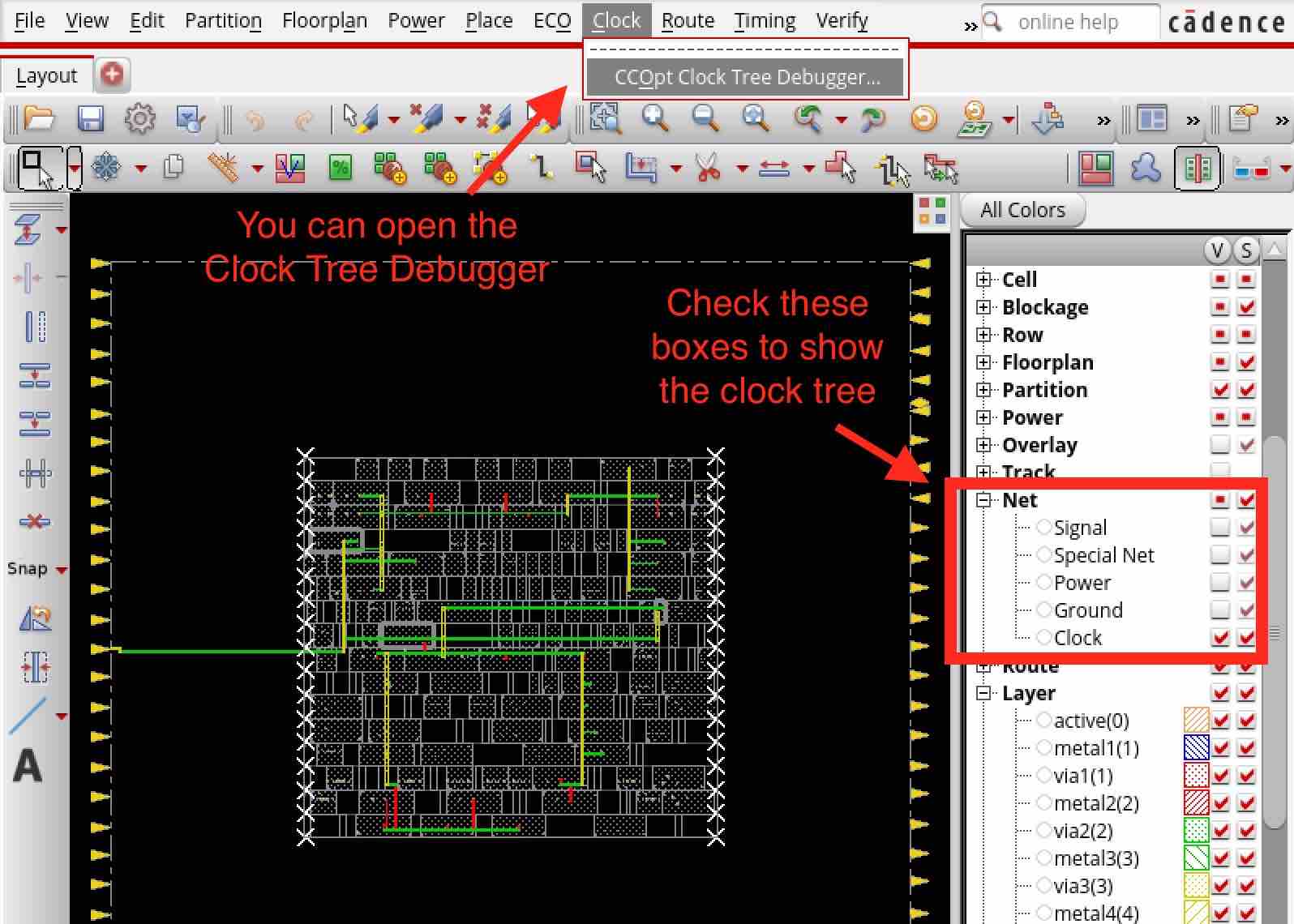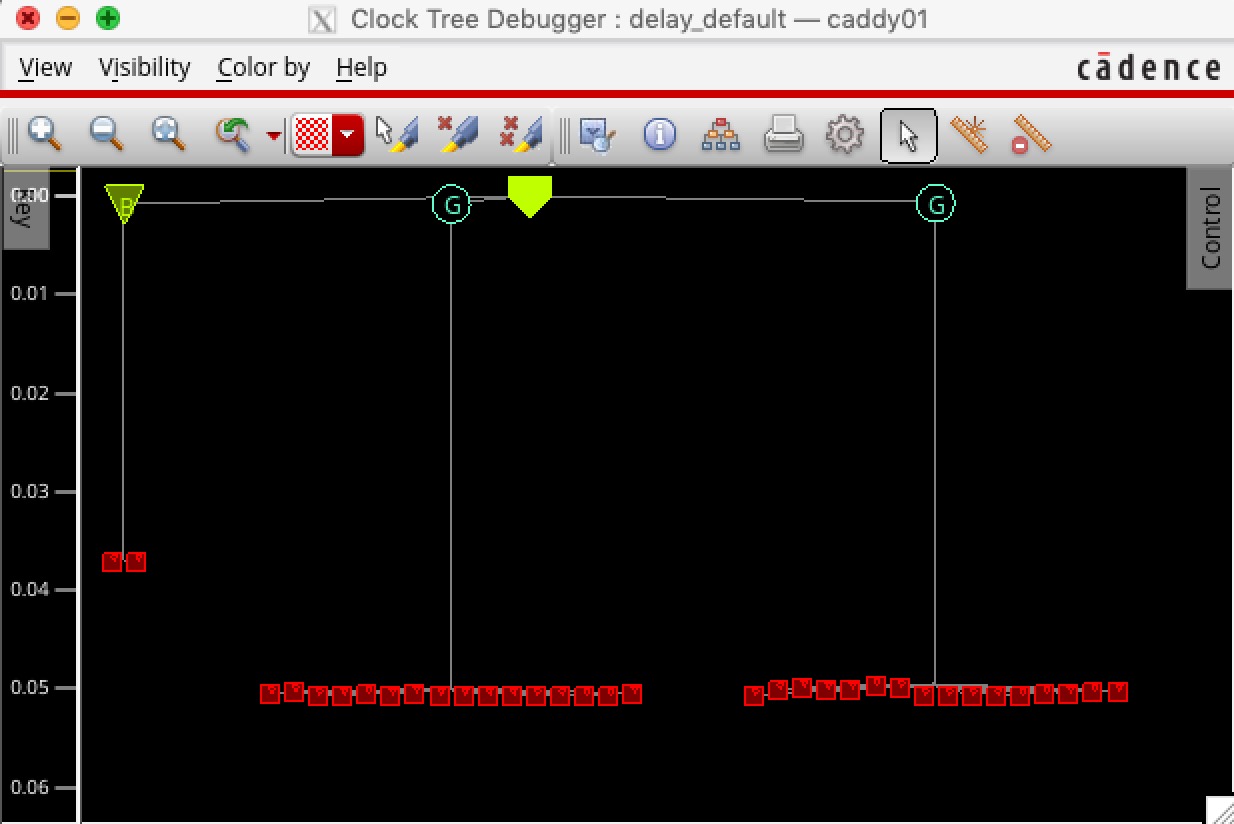Clock Tree Synthesis
The next step is clock tree synthesis (i.e., the cadence-innovus-cts
step), which skew-balances the clock tree. You can run the design up to
this step like this:
% cd $top/build
% make cadence-innovus-cts
Here are the inputs, outputs, and scripts and what they do. Again, you should not need to change any of these.
input |
design.checkpoint |
The working Innovus database from the previous step. |
output |
design.checkpoint |
The working Innovus database after the step finishes. |
script |
setup-ccopt.tcl |
These are options for clock tree optimization that you will probably not need to touch. |
script |
main.tcl |
Calls the Innovus Foundation Flow script. |
Here is a list of checks you will want to run through before moving on to the next step:
Look at the clock tree in the GUI – You can check boxes in the right panel of the GUI to show just the clock tree. This can give you a good visual sense of how the clock is being distributed. Notice how the clock enters from the middle pin of the left side in the GcdUnit layout. If your clock pin was placed in an odd corner during floorplanning, it could affect your clock tree.

Look at the clock tree debugger in the GUI – Open the
Clock Tree Debuggerto see a tree of all clock gates, buffers, and sinks in your design. The y-scale is the clock insertion delay for that cell (i.e., how long it takes for the clock to propagate from the pin to that cell).
